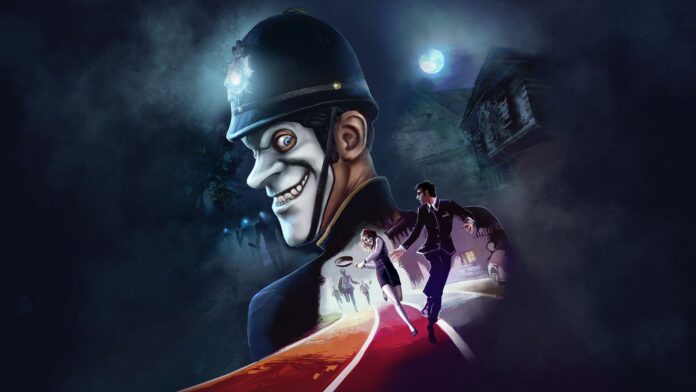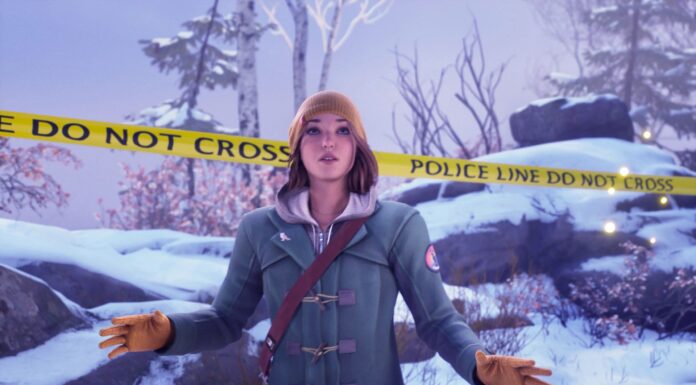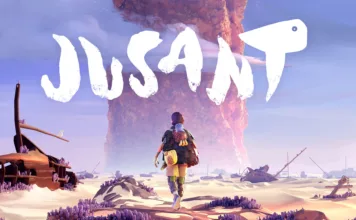A strong atmosphere and a story full of twists and depth should almost certainly result in an engaging, Bioshock-inspired adventure. Unless you make it a survival game, perhaps.
You start the game as Arthur, a boring civil servant whose job it is to censor old news reports. The atmosphere is that of the 60s and the mechanical ‘computers’ are very reminiscent of the film Brazil. The similarities do not end there. We Happy Few is set in Great Britain in an alternate timeline. The population is kept under control with lies and drugs, and anyone who does not obediently take their Joy pills is immediately seen as a traitor. After the first few minutes, a lot changes for Arthur, whose memories suppressed by Joy come to the surface, which tempts him to stop taking his pills. Arthur escapes his daily life and has to survive in the outside world, where he meets various characters who give him side sions while the main story slowly develops.
At first the game feels like a British Bioshock, with good writing full of biting sarcasm and typical British irony. This is reinforced by diary entries and other texts that you find here and there and that further fill in the world. What also resembles Bioshock is the constant search for materials in garbage cans, desks, cupboards and what not.
Most of the things you find aren’t ready to use though. We Happy Few has a crafting system, meaning you can make new weapons, medicines and other tools depending on the ingredients and recipes you have. There are also survival meters that track your hunger, thirst, sleep and Joy (your drug use). Your weapons also break, meaning you’re always searching.

Unfortunately, both crafting and survival meters do the game no favors. Exploring the (mostly procedurally generated) world consists of constantly looting as many houses and containers as possible, to prevent your meters from running out, or not having a strong enough weapon with you. While you won’t die of hunger or thirst, ignoring these stats does result in negative side effects, such as being able to run for a shorter time. Joy is a different case here. Taking Joy causes other inhabitants to largely leave you alone. When the Joy wears off, you are recognized as a ‘downer’ and attacked.
Constantly collecting materials becomes extra annoying when you run up against the inevitable inventory limit, forcing you to choose what to leave behind and what to take with you. This limit is partially mitigated by an endless vault found in safe rooms; anything you drop in there becomes accessible in all other vaults.
However, you don’t always have access to your vault, which makes for some annoying “you can’t run because you’re carrying too much” moments. This wouldn’t be so bad if it weren’t for the fact that progress in certain quests relies on being able to craft certain items. And while you can usually find enough items near an obstacle to progress, there are times when you have to actually go on a scavenger hunt to find the materials you need. What crafting does more than anything else is slow the game down. It feels like unnecessary occupational therapy that exists to give the procedurally generated world a reason to exist.
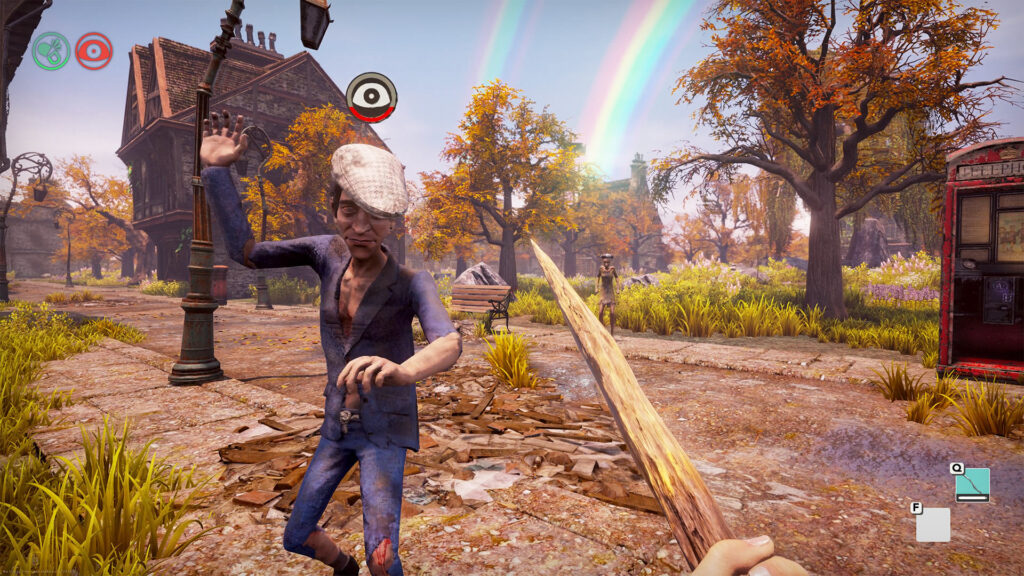
Another aspect of the game that doesn’t come across well is the fighting. You don’t have any firearms at your disposal and have to make do with fists or melee weapons. There is some variation in the melee weapons. For example, in addition to standard clubs, you can also make stun guns. However, the fighting remains a somewhat unsatisfying activity. You click the left mouse button to strike, the right is to parry. Striking costs stamina, and if that meter is empty, you can’t strike for a while. In practice, a fight is mainly a matter of clicking a lot, waiting for the meter to refill and clicking a lot more in the hope that the other person goes down before you do. There is little to no strategy in it. Although it is of course very British to attack an enemy with an umbrella, it is a shame that there is not more depth in the fighting.
By the way, you do get weapons with which you can attack enemies from a distance: grenades and darts. The latter can also be filled with a tranquilizer, provided you have the right ingredients. In the end, most fights will become the clickfest described above, unless you run away.
And here it turns out that the AI isn’t very good. If you’re out of sight and you hide in a trash can, you’re safe. Period. No need to worry, just wait for the enemies to go away. That weak AI is also in effect during the many stealth moments. Enemies are very easy to mislead by throwing a bottle in the opposite direction. Once you figure out how to play the soldiers or policemen, some of the tension disappears.
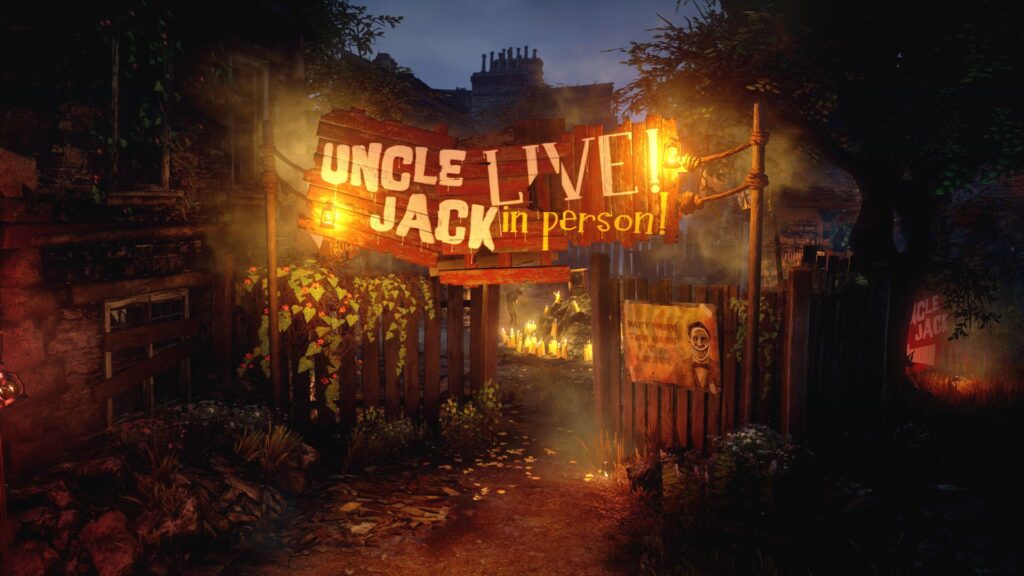
Yet it is not all doom and gloom. Because although the part of the game that is procedurally generated suffers from the weaknesses described above, there are also enough areas that are made by human hands. This is where you will find the most interesting ante challenges and the game suddenly comes very close to that Bioshock feeling. The time you spend in those human-designed levels makes up for a lot of the irritations.
The writing is also strong. The story is very well put together. Arthur is not the only character you control. There are actually three storylines that are related but do not directly influence each other, and each one is an interesting character with its own goals and side ties.
The development of We Happy Few started with the goal of making a pure survival game, but Early Access players begged for a story. The developers have taken that request seriously and the unique world with its special style comes to life well. It just seems a bit like the game has ended up in an identity crisis because of this. The strong storylines and the survival part do not connect at all. One mainly gets in the way of the other.
We Happy Few would have been a lot stronger if the survival mechanics had been completely removed and the game had focused on the hand-crafted encounters and challenges. Then the thirty-hour game would have been a lot shorter and therefore stronger. It’s a real shame when you’re in the middle of the mystery and want to know what exactly is behind Arthur’s trauma, you find out that you have to go back to a meadow and pick a bunch of herbs there to continue.
We Happy Few is out now on PC, PlayStation 4, and Xbox One. The PC version was played for this review.
